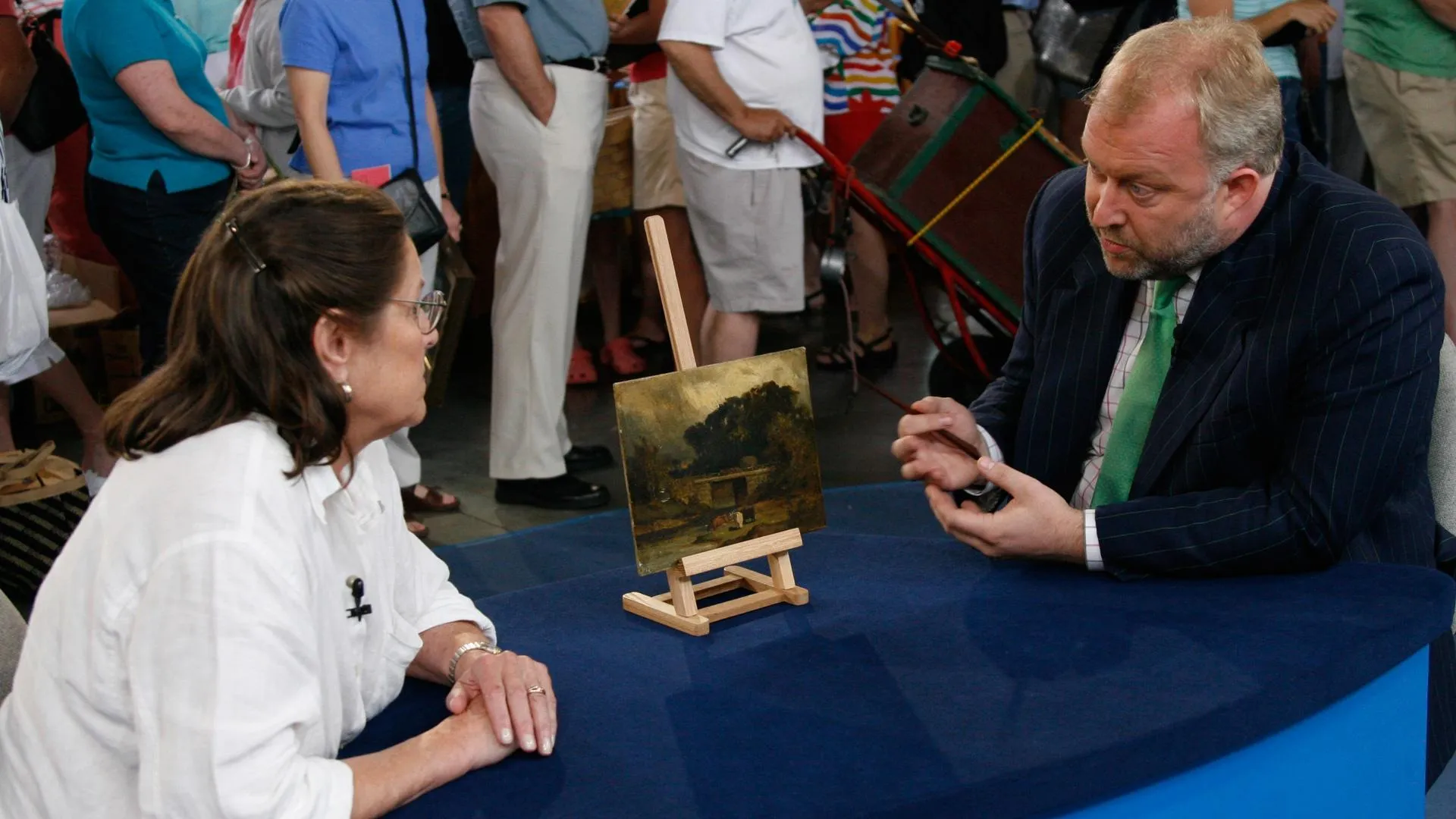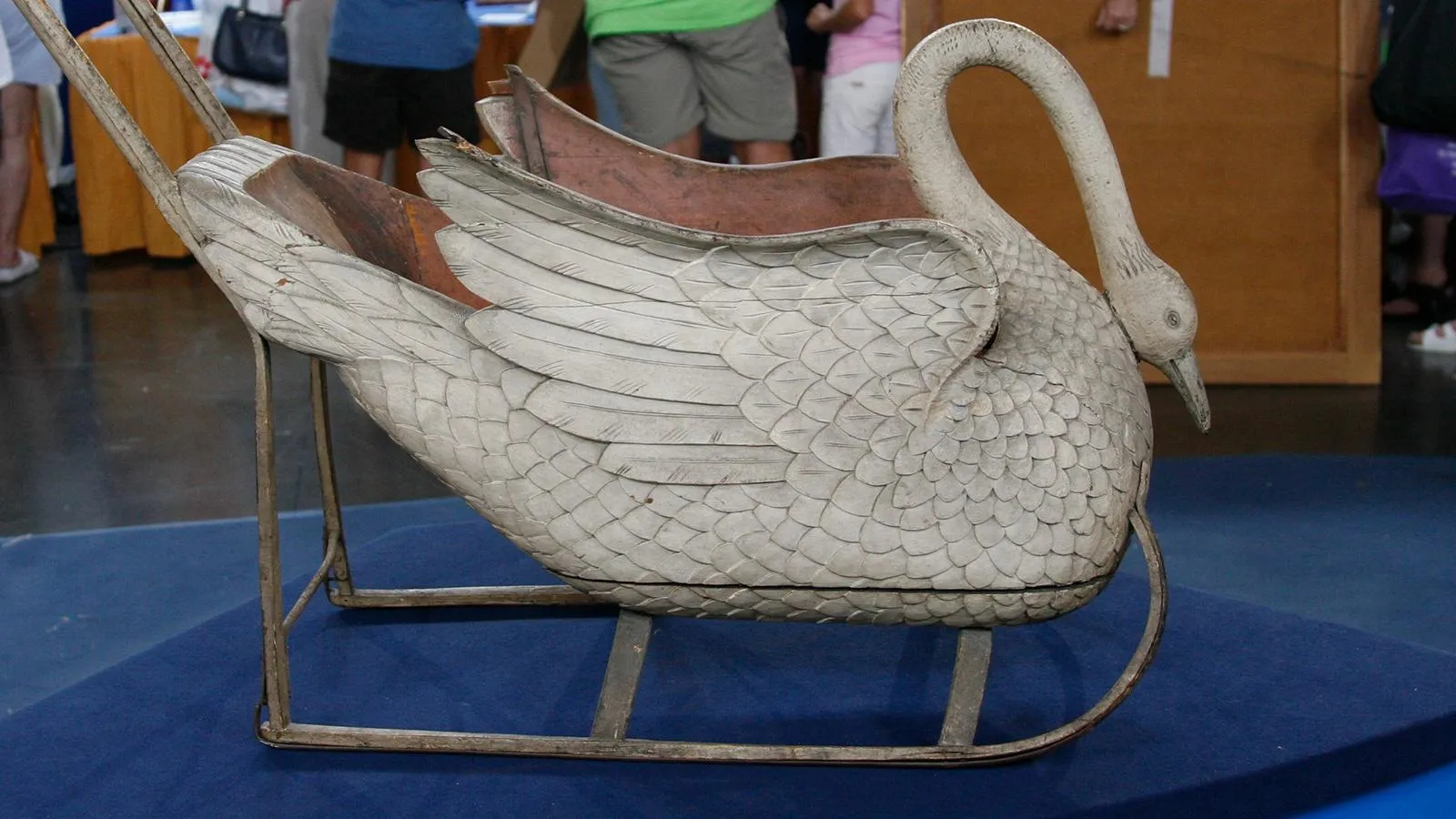GUEST: They were given to me by my father, and he said that they'd been in his family all his life, that he had gotten them from his mother's side of the family. I don't know how long they had them.
APPRAISER: They are very naturalistic. They're in the shape of leaves and they're applied with copper insects. This was a style that was very popular around 1880, 1890 in America. It was the Orientalist movement, and it was reaction to the opening of Japan and China in the late 19th century. They're by a company called George Shiebler. You see the maker's mark right here. The retailer is Theodore B. Starr. Now, George Shiebler started its company with five men in 1876. George Shiebler was one of the biggest makers of novelty items. He didn't go for run-of-the-mill stuff. His stuff was so kooky and funky, and there's a big collecting contingent. You'll see that the detail is so fine... Sometimes, around this time, you'll see insects or birds or reptiles applied in different metals besides copper-- silver, gold... This sugar bowl is lined with gold. Just ordinary creamer and sugar around this time period by an ordinary, late- 19th-century American maker would probably be worth about $50 to $75, but because they're by Shiebler, and they're in the American Orientalist style, they're worth about $800 to $1,200 for the two pieces. At auction.
GUEST: Wow.












